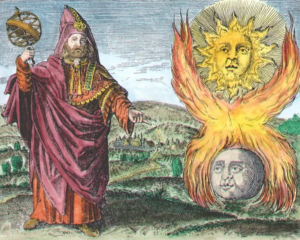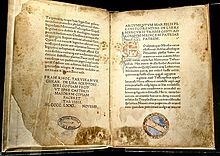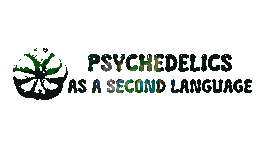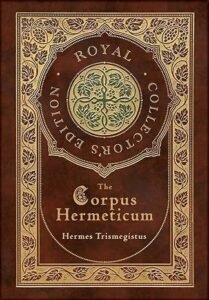Alchemy: The primordial of chemistry
I remember my introduction to the chemistry world around middle school, just like everyone, and I found it fascinating. However, something dwelled in my mind above all the chemical reactions we might achieve.
Who on earth invented chemistry?
Of course, I, later on, found out about the existence of Antoine Lavoisier, the “Father of modern chemistry.” Some of my colleagues were satisfied with that answer. I still believe it to be a much more complex concept to be made up from day to night. Which concepts existed prior to those invented in modern chemistry, and what are the primordials of such a complex subject?
Little did I know that such a question would bite me back in the future.
During a history class in high school, I partially studied the depths of the Ancient Civilizations of Egypt. Still, during academia, I always thought there were plenty of flaws in teaching and gaps in information.
So, I set sail to understand more about Ancient Egypt, their beliefs, philosophy of life, polytheism, and their life. And what’s the better place to learn something in the 21st century? The internet.
Finding information on the internet seems somewhat of an easy task. However, when it comes to detailed research, it gets murky. After a couple of months of researching, I came across one book that explained not only the philosophy of Ancient Egypt and Greece but a theme I thought was only present in the Harry Potter series, the principles of transmutation and alchemy.
For once, everything made sense. Alchemy, Mathematics, and Geometry originated from Egypt and Mesopotamia, and Medicine from Greece.
What other secrets could these ancient civilizations be hiding? And what is Alchemy exactly?
Before we dive into the world of alchemy, I want to start by saying that plenty of Ancient Egyptian beliefs and philosophies were lost at the time of emperor Constantine, who smothered those beliefs with the blanket of theology. However, it’s undeniable that those doctrines shaped India, Persia, Chaldea, Medea, China, Japan, Assyria, ancient Greece, Rome, and other ancient countries.
Such doctrines passed from Master to Students, who would become Masters after learning and understanding those teachings.
If we look closely into polytheistic communities such as Ancient Egypt and Greece, we can find a common link between them. The fact that wisdom was considered a deity was no coincidence.
What if I told you that according to the Hermetic beliefs, those doctrines were spread by a grandmaster, one who knew the three parts of the wisdom of the universe, those being Alchemy, the operation of the sun, Astrology, the operation of the stars, andTheurgy, the operation of the gods, Hermes Trismegistus?
I bet that’s a name you haven’t heard during your school years, but if I talk about Hermes or Thoth, you probably have heard or remember them.
Hermes is the son of Zeus and the Pleiad Maia. Hermes guided the souls (conductor) into the afterlife.

Thoth is the god of alchemy, the moon, wisdom, knowledge, writing, hieroglyphs, science, magic, art, and judgment.

Despite their apparent differences, both Gods were once worshipped as one in what would’ve been the temple of Thoth in Khemenu, known as Hermopolis (Meaning the Great City of Hermes), during the Hellenistic period, a figure under the name, you guessed it right, Hermes Trismegistus.
By understanding the three parts of the wisdom of the universe, Hermes Trismegistus is considered the founder of science, religion, mathematics, geometry, alchemy, philosophy, medicine, and magic.
How he gained such understanding is yet unknown, as finding information and resources about such topics would be incredibly difficult, leaving minds to wonder. Some go as far as claiming that he acquired such knowledge during trance meditative states.
He covered topics in medicine, chemistry, law, art, music, magic, philosophy, geography, mathematics, and anatomy. His knowledge was admired by the Ancient Egyptians, giving him the nickname the Scribe of the Gods and revered as the Fount of Wisdom amongst other ancient lands.
Claiming that Hermes Trismegistus learned those branches of study while in a trance seems farfetched, phantasia between reality and the mystique.
Truthfully, I believe one can master those areas by oneself. We have presented such in history, people with various areas of expertise, but in a scholarly way. You must indulge yourself in experiencing, testing, and hypothesizing such theories. Hermes Trismegistus believed that a theory had to be experienced to be proven. Therefore, we will sway ourselves from the mystique and oblivious present in the Hermetic beliefs and cover beliefs that have impacted the scientific realm and have physical evidence of happening.
Thus, we bring up the question, who was in Hermes Trismegistus? The one who created such disciplines would leave some mark or evidence in history, right?
If we look into the various entries mentioning Hermes Trismegistus, we will see that he was a syncretic creation of mythical origin. Such claims are solemnly somewhat correct. The physical portrayal of Hermes Trismegistus might be fictitious, or at least, to some extent, as Hermes Trismegistus is not a figure but a title, represented by what is now the symbol of medicine, the caduceus.

To understand, we must first cover the origin of Trismegistus, which means “thrice as great” three times grand master, the grand teacher. With this, we understand that Hermeticism has a hierarchy of wisdom. One starts as a student, becomes a master, and eventually may become Hermes Trismegistus and have their own set of students.
So it is to be said that there was not only one Hermes Trismegistus but various entities, thus allowing Hermeticism and Hermetic doctrines to spread across the world throughout the years and survive until today as an obscure philosophic religion.
Those who praised the wisdom spread by Hermes and became students of Hermes (Hermetics) raised Hermeticism as a religion based on the dualistic faith that portrays the body of men and their interactions with the material world as antagonistic to the soul.
“The original Man had gone to earth and united with nature. He became different from all the other creatures of the earth.”
Hermeticism was considered pagan in the eyes of Christian beliefs. Thus, Emperor Constantine and his successors destroyed most of the Hermetic literature. By 312AD, Christians have erased almost every trace of Hermeticism, putting to death thousands of pagans and destroying temples with sacred texts. Forcing Hermetic traditions to remain in the occult. Until today, we use the term “Hermetic” in the sense of “Secret or Sealed so that nothing can escape.” Hermes always observed the principle of secrecy in their teachings. They did not believe in “casting pearls before swine” but held to the teaching “milk for babes; meat for strong men.”
Even with the secrecy around Hermeticism and destroyed texts, Hermeticism would become a point of interest to early science pioneers and would prevail again during the Renaissance, influencing many pioneers from the scientific revolution.
Pythagoras was said to be an initiate to the Hermetic arts. Plato was deeply influenced by Pythagoras and inspired by the Hermetic teachings.
Aristotle studied at Plato Academy in Athens, where he learned about Hermetic teachings and shared them with his student Alexander the Great, who conquered Egypt and founded Alexandria, a hub for Alchemy and Hermeticism.
Nicolaus Copernicus, Johannes Kepler, Robert Boyle, and Isaac Newton were also heavily influenced by hermeticism.
Copernicus even mentions Hermes Trismegistus in the first predictive mathematic model for a heliocentric system.
“In the middle of all sits the Sun enthroned. In this most beautiful temple could we place this luminary in any better position from which he can illuminate the whole at once? He is rightly called the Lamp, the Mind, the Ruler of the Universe; Hermes Trismegistus names him the Visible God, Sophocles’ Electra calls him the All-seeing. So the Sun sits as upon a royal throne ruling his children the planets which circle around him.”- Nicolaus Copernicus.
Newton spent most of his time rediscovering the wisdom of the ancient, including the Corpus Hermeticum and the Emerald Tablet. Newton was a devout scholar and practitioner of alchemy, which influenced his scientific work, including the laws of motion, the theory of gravity, his work on optics, and the invention of calculus.
Paracelsus, famous for his quote “The dose makes the poison”, was influenced by Hermetic, Neo-Platonic, and Pythagorean philosophy. He advocated that the final arbiter for a theory should be experienced and that humility and diligent labor are necessary.
“He can be surprised by an anomaly- like a white raven- which confounds all the books; and all his experience, everything he has learned at the sickbed, is suddenly gone. Therefore study each day without respite, investigate and observe diligently; despise nothing, and do not lightly put too much trust in yourself. Do not be arrogant.” – Paracelsus
Such beliefs from Paracelsus are actually part of Hermetic beliefs. In the Hermetic tradition, nature is investigated through observation, experiment, and illumination to discover and detect what is invisible and find the hidden linkages between things, allowing us to discover the influence of one thing over another, to understand phenomena, and to learn how to manipulate them.
These beliefs were fundamental to alchemy and stand up until today in the scientific world. One great example of such methods being in today’s standards would be pharmacology. We have observed certain botanical species, understand their mechanism and how they influence our metabolism upon intake, and manipulate their alkaloids to create a new, more effective medicine.
Another set of examples that remains today in chemistry would be the seven stages of alchemy.
Calcination:
Burning of the prima materia into ash.
Dissolution:
The chemical process of dissolution is to take the ashes from calcination and dissolve them in water.
Separation:
In this stage, the alchemist separates and filters the products of a dissolution.
Conjunction:
The alchemist combines the elements deemed worthy in separation into a new substance.
Fermentation:
Bacteria and other living organisms are introduced to the substance to continue its breakdown.
Distillation:
The solution is brought to a boil and condensed to purify the substance.
Coagulation:
The substance is crystalized into a solid state.
These seven stages of alchemy became noticeable during the Renaissance when Leonardo di Pistoia brought the sacred text Corpus Hermeticum to Pistoia, Italy (1460), introducing Europe to Hermetic teachings and beliefs.

Coincidentally, twenty years after Hermetic teachings and Alchemy came to Europe, the pagan hunt started, making Hermetic beliefs and Alchemy to be practiced in secrecy once again.
During this period, alchemists split into two groups: those with a scholarly scientific approach and those with a spiritual/metaphysical approach to alchemy.
The connection with the spiritual, occult, witchery, and secrecy brought suspicions to the church and government, leaving alchemy faded into obscurity as a quackery. People began to give a side-eye to the power of alchemy, and the later refined scientific methods began to mock them.
Regardless of its connection to the occult and being considered quackery, alchemy can take credit for several chemical achievements and techniques proven to be essential to the birth of modern labs.
We can see that alchemists did have a purpose for their research if we decode the intricate notes and diagrams of experimental knowledge with the objective of mastering techniques such as distillation, sublimation, and other techniques essential to modern labs.
Alchemists discovered the secrets that created the European porcelain industry. Other alchemists discovered phosphorus, zinc and metallic arsenic. Paracelsus aided in transforming medicine by proposing diseases were caused not by an imbalance of bodily humors but by harmful entities that would be treated with chemicals. (Such beliefs were passed on to him by spiritual Hermetic beliefs).
Deep down, alchemists were trying to understand the material basis of the world, like a modern chemist or someone in technology, and the fact that society marginalized Robert Boyle and Sir Isaac Newton, both fathers of modern chemistry and physics and also vivid students of alchemy for their beliefs in alchemy, shows more about society’s need to separate itself from the supposedly unenlightened past than about alchemists themselves.
Due to its connection with Hermeticism, alchemists’ notebooks are considered cryptic, written under arcane pseudonyms, invented authorities, and vast, secret connections between planets, the spiritual world, and earthly elements. Metals specifically were seen as an expression of the divine.
Copper is one of the seven metals of alchemy- corresponding with Venus
Gold is one of the seven metals of alchemy. For the alchemist, it represented the perfection of all matter on any level, including that of the mind, spirit, and soul. The symbol of gold could also represent the sun in astrology. –Sun ☉ 🜚 ☼
Iron is one of the seven metals of alchemy. The symbol for iron could also represent the planet Mars in astrology. –Mars
Lead is the first and oldest of the seven metals of alchemy. The symbol for lead also represents the planet Saturn in astrology. –Saturn ♄
Quicksilver was used to make red mercuric oxide by heating the element in a solution of nitric acid. The reaction of quicksilver in nitric acid is striking as a thick red vapor hovers over the surface, and bright red crystals precipitate to the bottom. Alchemists were convinced that mercury transcended both the solid and liquid states, both earth and heaven, life and death. Mercury is one of the seven metals of alchemy. The symbol for mercury could also represent the planet of the same name in astrology. –Mercury ☿ The metal is often also represented by a serpent or snake.
Silver is one of the seven metals of alchemy. The symbol for silver is also associated with the moon in astrology. –Moon ☽ or ☾ ( or ) [also 🜛 in Newton]
Tin is one of the seven metals of alchemy. The symbol for tin could also represent the planet Jupiter in astrology. –Jupiter ♃
But as scholars reexamine the roots of chemistry, they see less discrepancy between chemistry and alchemy. Alchemists tried and discarded theories. Like scientists, alchemists saw themselves as analytical thinkers trying to accelerate and manipulate physical processes. Early chemists often concluded no more accurately than alchemists who had preceded them. Georg Stahl, for example, renounced alchemy but then explained fire by proposing that a fanciful substance called “phlogiston” infused all combustible objects.
Without alchemy, it’s unlikely that chemistry could’ve happened at all. After all, the fathers of chemistry were either practicing alchemists or former alchemists, and the chemistry labs in the 18th century wouldn’t be much different from an alchemist’s workshop!

The Philosopher’s stone myth:
When approaching the term alchemy, it is nearly impossible to miss the big elephant in the room, the infamous Philosopher’s Stone.
To achieve the Philosopher’s Stone, one needs to be familiar with the methods of transmutation, the process of changing from one nature, form, or substance into another.
In this case, to transmute metals into gold.
“The rich possess much that the poor lack, while the poor often possess things that are beyond the reach of the rich. The millionaire may have the inclination toward feasting, and the wealth wherewith to secure all the dainties and luxuries of the table while he lacks the appetite to enjoy the same; he envies the appetite and digestion of the laborer, who lacks the wealth and inclinations of the millionaire, and who gets more pleasure from his plain food than the millionaire could obtain even if his appetite were not jaded, nor his digestion ruined, for the wants, habits and inclinations differ. And so it is through life.”- Excerpt from The Kybalion
When reading this passage, we might get somewhat twisted. Alchemists wanted to achieve galore, yet their principles claimed this would lead to their ruin. Why were they focused on making the Philosopher’s Stone in the first place?
In reality, according to the Hermetic doctrines, the Philosopher’s Stone might be nothing more than a metaphor, unlike popular belief.
What if I told you that mentioned transmutation might direct to changing our mental states, feelings, and emotions into others?
These methods are called Mental Transmutation or Art of Mental Chemistry in Hermetic principles. To understand what I mean by Mental Transmutation. For this, we will need to understand the first of the Seven Hermetic principles.
The Principle of Mentalism, the axiom of which is the ALL is mind; the Universe is Mental. Meaning the underlying reality of the Universe is nothing more than the mind. The Universe itself is mental.
If the Universe is mental in its nature, mental transmutation would be the art of Changing the conditions of the Universe along the lines of Matter, Force, and Mind. This is what ancient writers called Magic and had to say in their mystical works, hence why they gave so few practical instructions.
To be able to master transmutation, one should be able to transmute frustration into enjoyment, impatience into patience, hate into love, strife into peace, sadness to happiness, etc. Thus, the ALL is mental.
Understanding this, we might find another principle, the principle of Rhythm. Everything has a rhythm to it. Every atom, being, and everything around us vibrates in its way.
“Everything flows out and in; everything has its tides; all things rise and fall; the pendulum-swing manifests in everything; the measure of the swing to the right, is the measure of the swing to the left; rhythm compensates.” – Excerpt from the Kybalion.
The best way to visualize this would be to imagine a pendulum swinging between our lower and higher planes of consciousness, taking both positive and negative swings.
To control such swings, we must find another doctrine from Hermetic Principles, the Law of Neutralization, which functions by raising our ego above the lower plane of mental activity. So, if we are aware of the negative swing and can avoid it, we can Transmute from mere lead into gold in a mental state.





